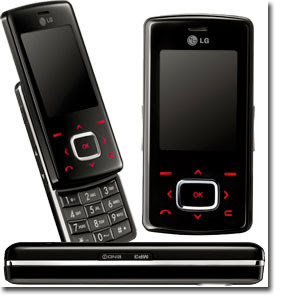 These "polymer opal films" belong to a class of materials known as photonic crystals. Such crystals are built of many tiny repeating units, and are usually associated with a large contrast in the components' optical properties, leading to a range of frequencies, called a "photonic bandgap," where no light can propagate in any direction. Instead, these new opal films have a small contrast in their optical properties.
These "polymer opal films" belong to a class of materials known as photonic crystals. Such crystals are built of many tiny repeating units, and are usually associated with a large contrast in the components' optical properties, leading to a range of frequencies, called a "photonic bandgap," where no light can propagate in any direction. Instead, these new opal films have a small contrast in their optical properties.As with other artificial opal structures, they are also "self-assembling," in that the small constituent particles assemble themselves in a regular structure. But this self-assembly is not perfect, and though meant to be periodic, they have significant irregularities. In these materials, the interplay between the periodic order, the irregularities, and the scattering of small inclusions strongly affect the way the light travels through these films, just as in natural opal gem stones, a distant cousin of these materials. For example, light may be reflected in unexpected directions that depend on the light's wavelength.
Photonic crystals have been of interest for years for various practical applications, most notably in fiber optic telecommunications but also as a potential replacement for toxic and expensive dyes used for coloring objects, from clothes to buildings. Yet much of their commercial potential has yet to be realized because the colors in manmade films made from photonic crystals depend strongly on viewing angle. If you hold up a sheet of the opal film, Baumberg explains, "You'll only see milky white, unless you look at a light reflected in it, in which case certain colors from the light source will be preferentially reflected." In other words, change the angle, and the color changes.
These photonic crystals are apparent in the natural world as well but are more consistent in color at varying angles. Opals, butterfly wings, certain species of beetle, and peacock feathers all feature arrays of tiny holes, neatly arranged into patterns. Even though these natural structures aren't nearly as precisely ordered as the manmade versions, the colors produced are unusually strong, and depend less on the viewing angle.
Until now, scientists believed that the same effect was at work in both manmade and natural photonic crystals: the lattice structure caused the light to reflect off the surface in such a way as to produce a color that changes depending upon the angle of reflection. Baumberg, however, suspects that the natural structures selectively scatter rather than reflect the light, a result of complex interplay between the order and the irregulaty in these structures.
Given that hunch, Baumberg's team developed polymer opals to combine the precise structure of manmade photonic crystals with the robust color of natural structures. The polymer opal films are made of arrays of spheres stacked in three dimensions, rather than layers. They also contain tiny carbon nanoparticles wedged between the spheres, so light doesn't just reflect at the interfaces between the plastic spheres and the surrounding materials, it also scatters off the nanoparticles embedded between the spheres. This makes the film intensely colored, even though they are made from only transparent and black components, which are environmentally benign. Additionally, the material can be "tuned" to only scatter certain frequencies of light simply by making the spheres larger or smaller.
In collaboration with scientists at DKI in Darmstadt, Germany, Baumberg and his colleagues have developed a solution for another factor that traditionally has limited the commercial potential of photonic crystals: the ability to mass-produce them. His Darmstadt colleagues have developed a manufacturing process that can be successfully applied to photonic crystals and they now can produce very long rolls of polymer opal films.
The films are "quite stretchy," according to Baumberg, and when they stretch, they change color, since the act of stretching changes the distance between the spheres that make up the lattice structure. This, too, makes them ideal for a wide range of applications, including potential ones in food packaging, counterfeit identification and even defense.
The researchers will publish their findings in the July 23 issue of Optics Express, an open-access journal of the Optical Society of America.
Article: Otto L. J. Pursiainen, Jeremy J. Baumberg, Holger Winkler, Benjamin Viel, Peter Spahn, Tilmann Ruhl, "Nanoparticle-tuned Structural Color from Polymer Opals," Optics Express, Vol. 15, Issue 15,
Adapted from materials provided by Optical Society of America.































